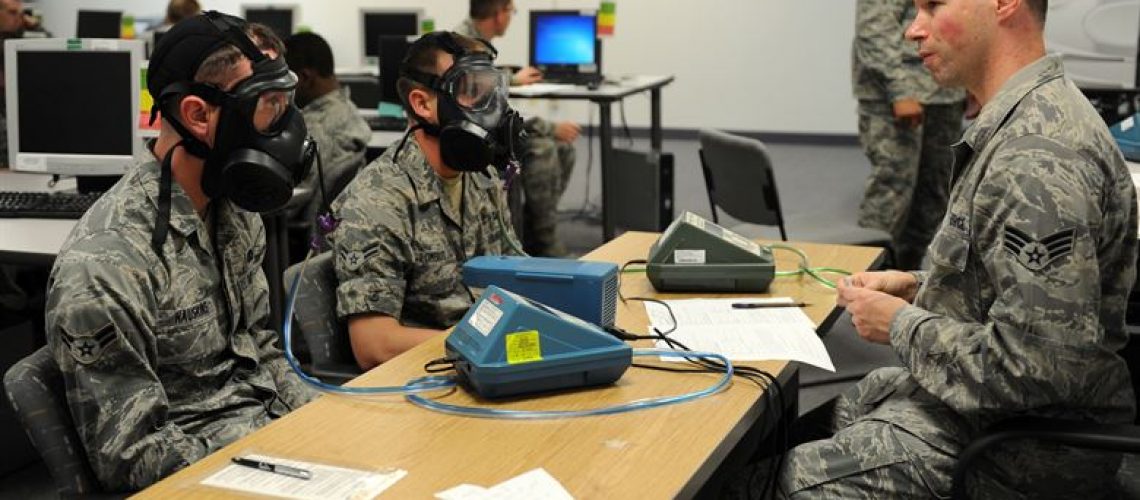During some recent fit testing we were conducting, a person asked, “How do I know that hood is clean when you put it on my head”. The 2020 COVID-19 pandemic has made us think more about everything we are doing. We all may have questions regarding potential transmission of the virus (SARS-CoV-2) that causes the disease (COVID-19) during respirator fit testing. Qualitative fit testing (QLFT) with saccharin or Bitrex™ involves a hood worn over the subject’s head, and quantitative fit testing (QNFT) usually requires that a narrow tube be placed on the inside of the respirator. Each of those items are reusable and should be disinfected according to applicable recommendations from health authorities regarding infection prevention for infectious agents of concern.
Infection Prevention Practices During Fit Tests
As advised by the World Health Organization (WHO) in their document Getting your workplace ready for COVID-19, March 2020, employees who are ill should stay home from work whenever possible, to avoid transmitting COVID-19 to coworkers. Respirator wearers should not be fit tested if they have symptoms indicating that they may be ill. Likewise, fit testers should not conduct fit testing if they have symptoms of illness. These are always good public health practices which are especially important during an infectious disease outbreak.
Disinfection Considerations During Qualitative Fit Testing (QLFT)
During qualitative fit testing (QLFT) using saccharin or BitrexTM, a fit test subject wears a hood during both the sensitivity test and the fit test, and nebulizer nozzles are placed inside the hood during the fit test. During times when infectious disease outbreaks are a particular concern, fit testers may consider adopting the following practices, if deemed appropriate by a risk assessment:
- During fit test, use the same hood for a subject that was used during the sensitivity test for that subject.
- Use one set of nebulizers for each subject being fit tested.
- Disinfect the inside surface of hoods and the outer surfaces of nebulizer nozzles between each fit test, using a disinfectant from the list of products that meet EPA criteria for use against SARS-CoV-2 (the cause of COVID-19), or one approved by a similar local authority outside the U.S.
Note that not all disinfectants have been tested on all fit test equipment, and some disinfectant products may be found to decrease the useful life of the hood or nebulizer. All fit test equipment should always be inspected before each use and should be thrown away if they show any signs of damage or wear.
Disinfection Considerations During Quantitative Fit Testing (QNFT)
During quantitative fit testing (QNFT) some applications use an adapter tube that must be inserted into the respirator past the inhalation valve and positioned near the mouth. This opens a path to the fit testing adapter and filter. The authors of a study published in the American Industrial Hygiene Association Journal concluded that reaerosolization of collected TB bacteria and other particles less than a few microns in size, once entrained on filter media, is insignificant at conditions encountered in respirator wear.
The exterior of the tube and interior of the fit test adapter should be disinfected between each fit test, using a disinfectant from the list of products that meet EPA criteria for use against SARS-CoV-2, or one approved by a similar local authority outside the U.S.
Note that not all disinfectants have been tested on all fit test adapters, and some disinfectant products may be found to decrease the useful life of the adapter. All fit test equipment should always be thoroughly inspected before each use and should be thrown away if they show any signs of damage or wear.
Fit Tester Hand Hygiene
The fit tester should perform hand hygiene as deemed appropriate by the employer organization’s adopted practices for reducing transmission of COVID-19. The WHO makes recommendations for hand hygiene including frequent handwashing and the use of sanitizing hand rubs.
Because fit testers may be in relatively close proximity to fit test subjects during fit testing, respiratory protection for the fit tester may also be deemed necessary.
East Shore Safety is following all proper fit testing guidelines to help curb the spread of the Coronavirus. Please reach out to us if you are looking for any of your employees to be fit for a respirator. We are located in Massachusetts but, will travel throughout New England and New York to conduct these fit tests. www.eastshoresafety.com

